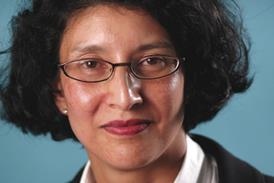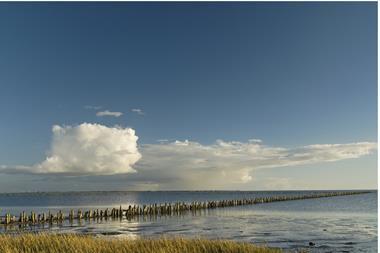The Church Commissioners – the investment arm of the Church of England – has announced returns of 8.2% on its £7bn (€8.9bn) portfolio for 2015.
Though lower than the 14.4% delivered in 2014, the return is still 2% above the fund’s target of inflation plus 5%.
During 2015, the Commissioners focused on making selective sales from the property portfolio and on further diversification, to ensure the portfolio is more defensive in the face of expected market headwinds.
This strategy has continued into 2016, when in March, the fund’s assets committee approved the sale of £250m of global equities, increasing cash holdings from 8% (as at end-2015) to just over 11% of total assets.
While the fund has achieved an average 9.7% per annum growth over the past 30 years, Andreas Whittam Smith, first Church estates commissioner, warned that achieving such a satisfactory performance in future might be harder.
He said investors were nervous because they felt governments had lost the power to reverse any slowdown in economic activity.
In the past, governments would reduce interest rates, but now that rates hover around zero, that remedy is unavailable.
“It’s hard to believe negative interest rates can provide the necessary boost, or governments would let the supply of money expand,” he added.
“But doing that on a grand scale recently through so-called ‘quantitative easing’ has had more impact on the prices of assets, especially real estate, than it has had on business activity.
“The risk is that economic activity slows down across the world and remains stuck at a low level.”
The endowment fund helps finance the Church’s activities, as well as pensions arising from pre-1998 service.
Over 2015, property – 28% of total assets – was a star performer, delivering a 14.4% return across all portfolios, although less spectacular than the 27% achieved the year before.
The Commissioners attributed this return to active management of a high-quality set of properties.
The best performing property class was strategic land, which returned 19.8%.
The asset class, which makes up 3% of total assets, provides development opportunities and activity centred on housing developments in smaller towns and cities such as Carlisle, Peterborough and Chichester.
The largest allocation is to rural property, which makes up 9% of total assets and includes farmland, renewable energy and minerals rights.
This allocation returned 9% over 2015.
Residential property (6% of overall assets) returned 19.5% and commercial (4% of assets) 13.5%.
Indirect property – minority investments in property partnerships – amounts to 3% of assets and returned 12.8%.
The Commissioners focused on key sales, particularly of its global real estate investment trust (REIT exposure), and most of its student housing in the last three months of 2015.
Timberland now makes up 4% of total assets, delivering 13% for 2015.
The estate is invested in the UK, the US and Australia, and activity included further acquisitions of Indian sandalwood holdings in Australia.
Meanwhile, global equities, which make up 23% of assets, returned 3.5% over the year, with UK equities (9% of assets) faring slightly better, with a 3.6% return.
Tom Joy, director of investments, said: “Performance was again helped by our exposure to smaller companies, particularly in the UK, where our UK smaller companies portfolio returned 13.3% against its benchmark of 10.6%.”
However, following this strong performance, the fund trimmed its UK allocation to smaller companies and exited completely from smaller company mandates in Continental Europe.
Joy said exposure to emerging market equities had been a drag on the global portfolio performance.
However, the 8% allocation to defensive equities generated a return of 8%.
Private equity performed even better than in 2014, with a 20.2% return.
The allocation was increased to 4% over the year and will be further expanded over the next few years.
The fund’s fixed interest portfolio, which includes investments in global high- yield bonds and emerging market debt, returned -1.6% during 2015, as credit markets sold off because of concerns over defaults from the collapse in commodity prices.
The fund continues to maintain a low weighting to this asset class.
However, it continued to increase its allocation to private credit, which returned 14.6% over the year.










No comments yet